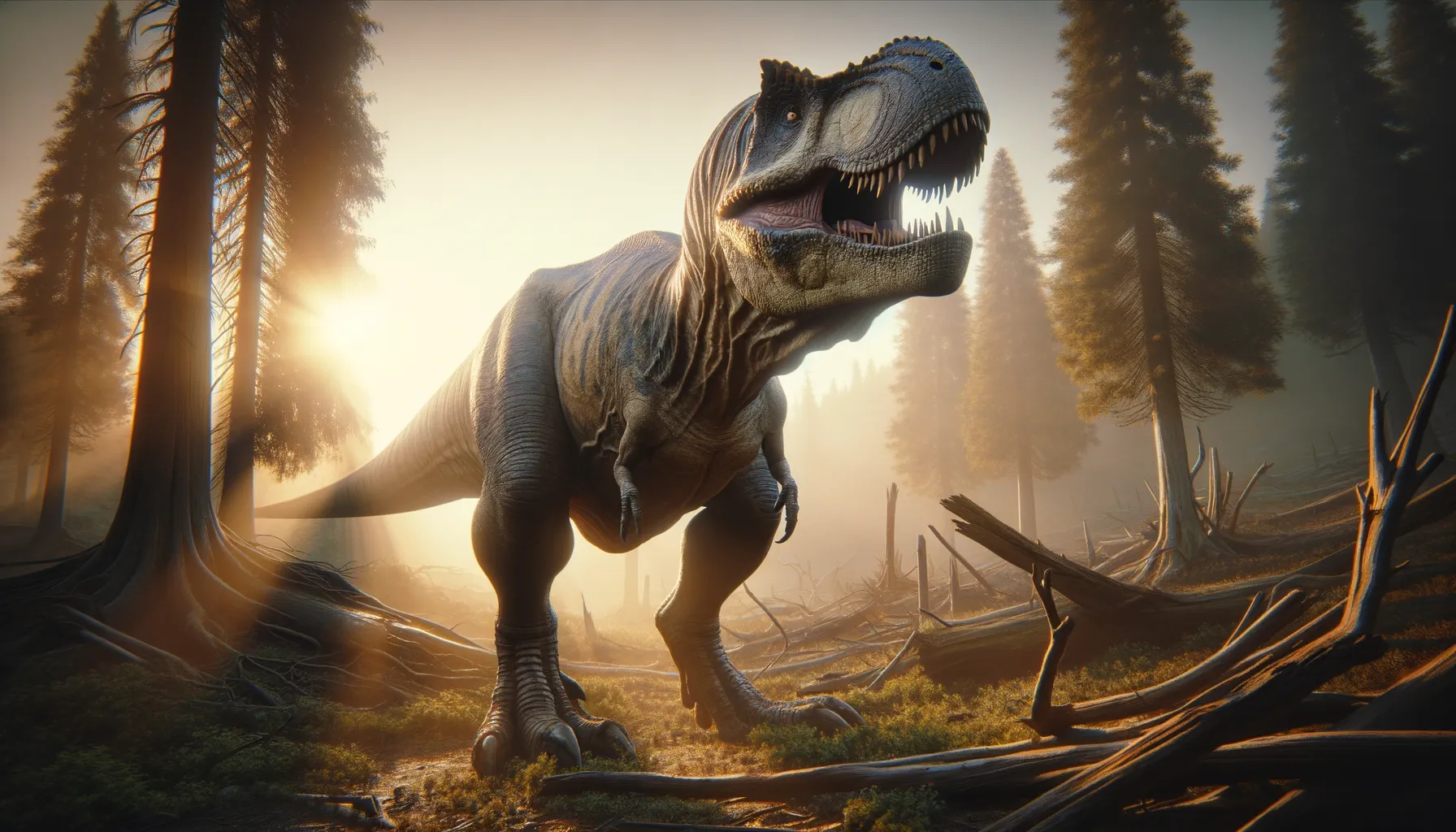
Dinotyrannus
A giant from the Cretaceous wild.
Period
Cretaceous
Length
Measured up to 12 meters in length.
Height
Approximately 4 meters at the hips.
Weight
Estimated to weigh between 4 to 5 tons.
Dinotyrannus was a formidable carnivorous dinosaur from the late Cretaceous period. Known for its massive size and powerful build, it was a top predator in its environment. Characterized by its strong hind legs and sharp teeth, Dinotyrannus played a crucial role in the ecosystem as a hunter and scavenger. Its fossils, primarily found in North America, provide crucial insights into the evolution of large theropods during the Cretaceous period.
Diet
Dinotyrannus primarily fed on large herbivorous dinosaurs, using its robust teeth to tear flesh. It was also an opportunistic feeder, scavenging carcasses when available, which allowed it to conserve energy.
Hunting
It likely hunted in solitary or small groups, ambushing prey with a combination of strength and speed. Dinotyrannus used its keen senses to track prey, relying on stealth and power to make a successful kill.
Environmental challenges
Dinotyrannus faced challenges such as climate fluctuations, which affected the availability of prey. Environmental changes led to habitat shifts, requiring it to adapt for survival. Competition with other large predators also posed constant threats to its dominance.
Speed
Moderate speed, similar to other large theropods.
Lifespan
Estimated around 25 to 30 years based on related species.
First discovery
Discovered in North America during the late 1800s.
Fun Facts
- Dinotyrannus is a lesser-known theropod dinosaur that lived during the Late Cretaceous period.
- It is believed to be closely related to the famous Tyrannosaurus rex, sharing similar features but being somewhat smaller.
- Fossils of Dinotyrannus have been found primarily in North America, giving researchers insights into its habitat and lifestyle.
- Compared to other dinosaurs, Dinotyrannus had robust teeth, suggesting a powerful bite capable of tackling large prey.
- Despite limited fossil evidence, it is thought Dinotyrannus might have had a keen sense of smell, much like its larger relative, the T-rex.
- The name Dinotyrannus means 'fearsome tyrant', reflecting its reputation among the predatory dinosaurs of its time.
Growth and Development
Young Dinotyrannus likely grew rapidly, reaching near-adult size in its teenage years. Growth rates were influenced by factors such as food availability and environmental conditions. Juveniles probably had higher survival rates when resources were plentiful.
Habitat
Dinotyrannus inhabited diverse environments, ranging from dense forests to open plains. These areas provided ample hunting opportunities and cover for stalking prey. Seasonal climate changes influenced its movement patterns and territorial ranges.
Interaction with other species
It competed with other large predators for food and territory, leading to frequent conflicts. Occasionally, Dinotyrannus might have scavenged prey killed by others. Its presence in the ecosystem likely influenced the behavior and evolution of prey species.
Natural lifespan
Its natural lifespan was around 25 to 30 years.
Reproduction
Dinotyrannus likely reproduced through laying eggs, with nests possibly built in secluded areas. Parental care might have included guarding the eggs and helping young hatchlings. Hatchlings were vulnerable and relied on parental protection.
Social behaviour
Primarily solitary, some evidence suggests occasional group interactions, particularly during hunting or mating seasons. Communication may have included vocalizations and visual displays. Territorial behavior was likely prevalent.
Fossil locations
Fossils of Dinotyrannus have been predominantly found in North America, providing vital clues about its existence. These findings have contributed significantly to understanding its distribution and habitat preferences. Ongoing excavations continue to reveal new information on its ranging patterns.
